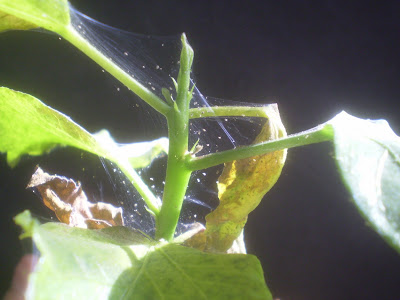This would possibly have been more helpful to people, or at least more timely, if I'd posted it earlier, but you know how things go sometimes.
Houseplants with heart-shaped leaves are surprisingly uncommon. I looked through the "yearbook" expecting to find them all over the place, but actually, most of the stuff that looked heart-shaped were actually either round (orbicular) or lens-shaped (elliptic) leaves, that only appeared to be slightly heart-shaped when viewed from a particular angle (e.g. Saxifraga stolonifera). I was really expecting to find a lot more than this.
Even a lot of plants that have leaves which are technically the right shape are a little more elongated than people normally think of as heart-shaped. More spear-shaped (hastate) or triangular (deltoid) than cordate (the botanical term for "heart-shaped"), really.
There's also a word, obcordate, which means heart-shaped-but-with-the-petiole-attaching-at-the-"bottom"-of-the-heart-instead-of-at-the-"dent." You can see why having a shorter word is useful. I'm counting obcordate leaves too, because the shape isn't any different, it's just the point of attachment that changes.
I am, no doubt, forgetting some plants here (in which case please, remind me in comments), but here's what I came up with:










We'll be doing anti-recommendations for this set, because most of these are perfectly nice folks, who would fit in just fine in most households. However, Hemionitis is not easy to grow at all -- miss one watering, even by half a day, and it'll tell you it hates you and will never forgive you before stomping off to its room to cut itself and write bad angsty songs on the guitar you bought it for its birthday. And it doesn't like direct sunlight that much either. I don't know how they are about humidity because I've only ever seen one in the greenhouse, but it's a fern, so, make your own guesses.
I've also never owned a Cyclamen, though I know of enough people who have that I'm thinking they may not be that bad. I'm a little scared to try, because plants with serious dormant periods freak me out. Maybe someday.
Finally, Peperomia caperata and I have had a bit of a falling-out since I wrote the profile for it; a few plants have failed to survive repottings (repottings that they actually needed, and were requesting), one got knocked over and broke off a good 80% of its leaves (it might be coming back, though), the one in Nina's terrarium got too dry, or too wet, or both, and went ffffft on me, and so I'm down to a small fraction of the number I had originally. In the right circumstances, they're still okay, but I don't have the kind of time available to deal with a Peperomia caperata anymore. Which is a shame, 'cause I think they're really pretty. (If I do get a new terrarium for Nina, though, I'll probably attempt to stock it with at least one Peperomia, either a caperata or argyreia.)
Not pictured:
Alocasia cvv. (elephant ears), to some degree
Anthurium 'Faustino Giant'
Anthurium 'Nikki'
Anthurium clarinervum
Anthurium luxuriens
Anthurium radicans x dresslerii
Most Caladium cvv.
Ceropegia woodii (string of hearts)
Cissus discolor (begonia vine)
Colocasia cvv. (elephant ears), to some degree
Dischidia ruscifolia (million hearts) (?)
Epipremnum aureum (pothos), mature leaves: juvenile leaves are lens-shaped
Ficus pumila (creeping fig), sometimes
Hoya carnosa 'Chelsea,' under some conditions (switches back and forth between cordate and elliptic)
Hoya kerrii (sweetheart hoya) (*obcordate*)
Some Oxalis spp. have compound leaves with heart-shaped leaflets
Peperomia incana, sometimes
Syngonium podophyllum cvv. (arrowhead vine). More hastate than cordate, but younger plants could sometimes go either way.
+2010+Feb+13.jpg)

























.jpg)
.jpg)
.jpg)





